
Cathodic Protection Training Course
Module 8
The effects of resistance on monitoring measurements

Any cathodic protection surveyor will tell you that watering dry ground 'improves' the readings.
What do they mean by IMPROVE?
They mean that the readings settle down to a recognisable voltage caused by the contact area between the ground contact electrode and the grains of soil has been increased. The contact area between each of the grains of soil has also been increased as it is the salts disolved in the water that provide a path for the current of electrical charges.

Just after watering sufficient charges will enter the meter to fill the capacitors that cause the display to show a steadier voltage.
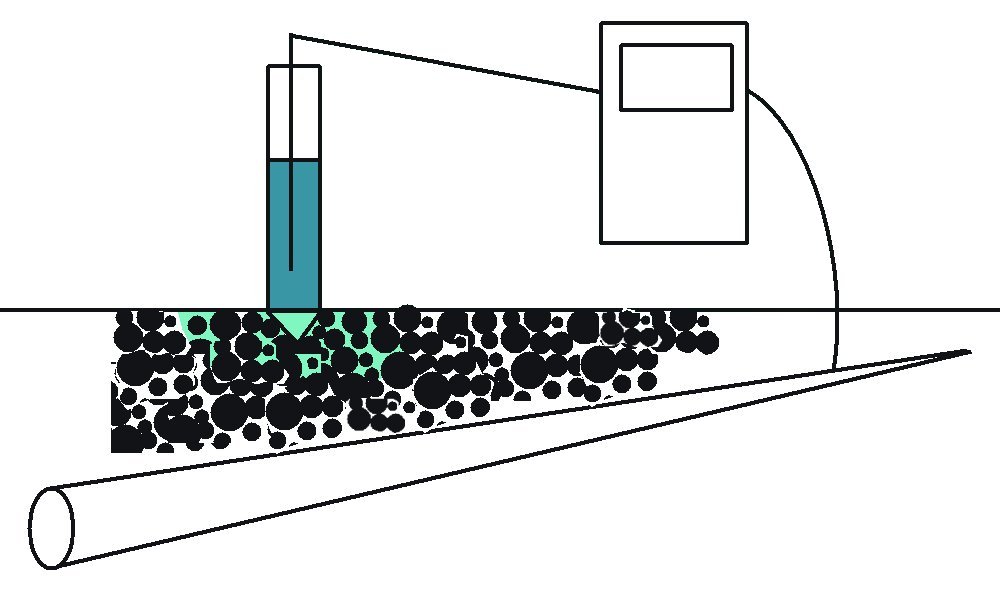
As more charges enter the meter the readings will steady to a readable value.
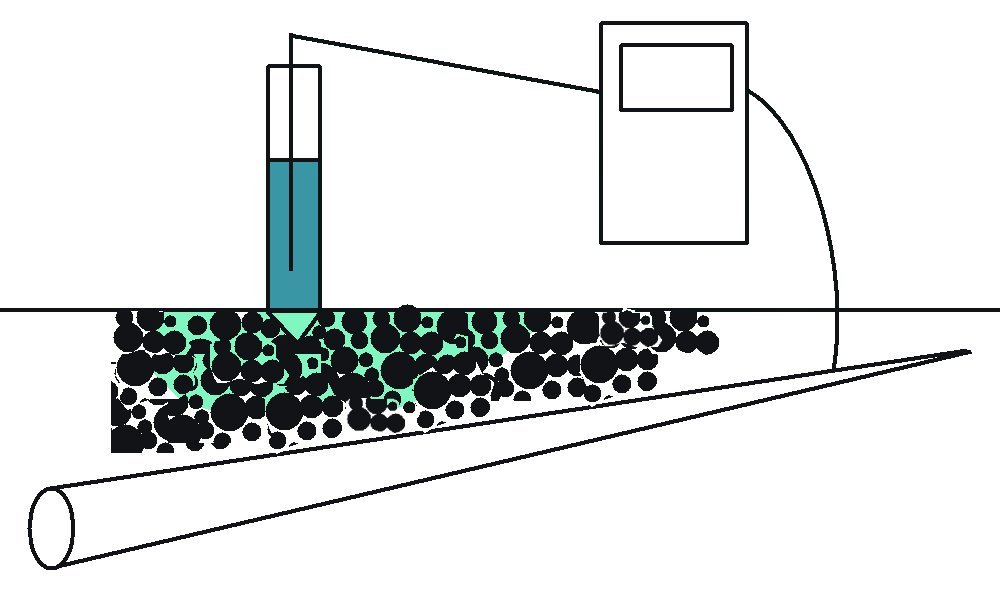
As the 'shells of resistance' due to the water, reach remote earth there will be sufficient resistances in parallel to enable the meter to reflect the true voltage from the subject metal to remote earth.
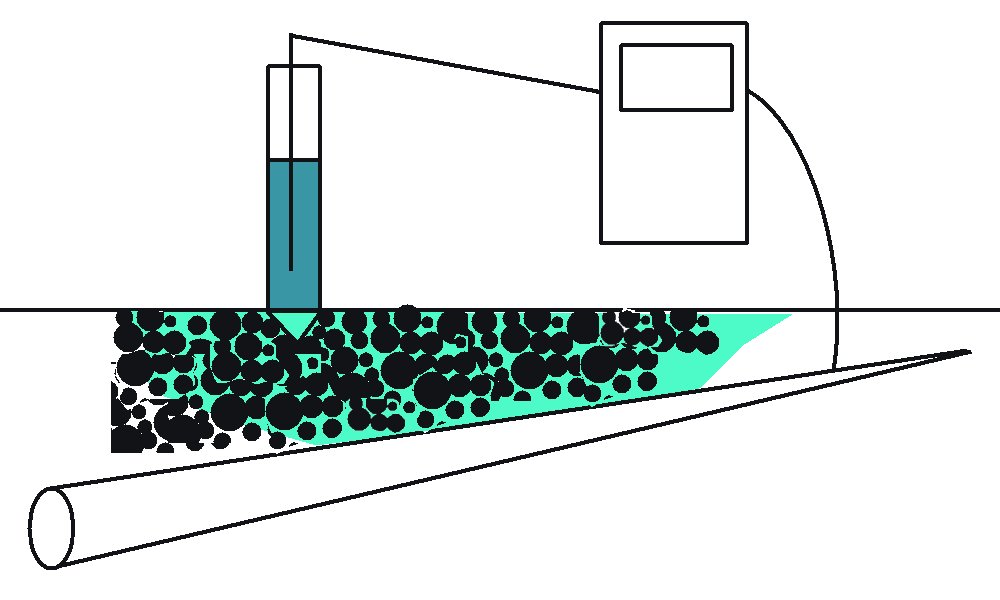
Remember that a voltage is a potential difference and that our measurement is the value of the charges compared between the poles of the voltmeter.
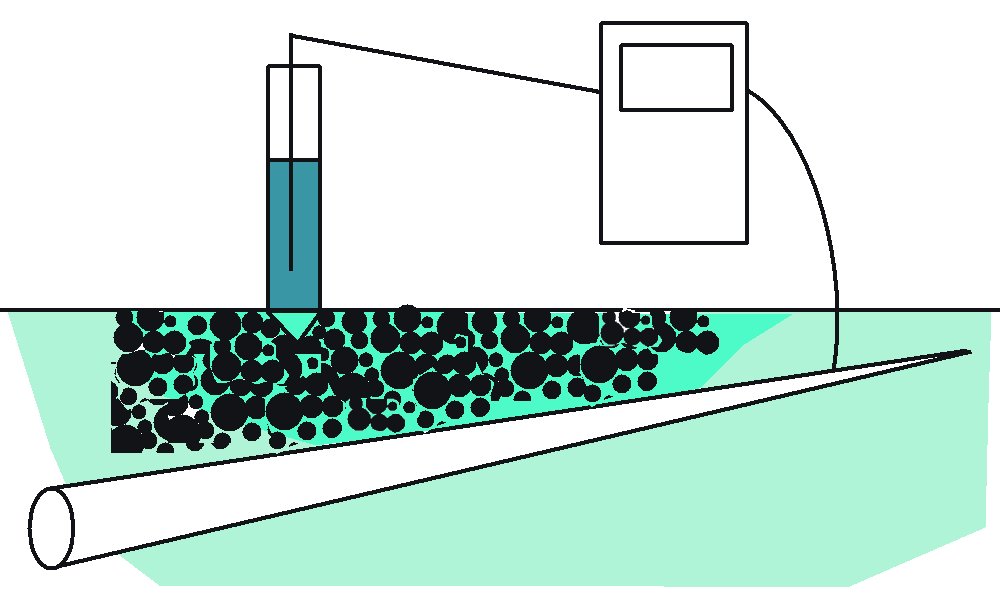
In this next photo the 9volt battery is puting charges into the dry sand at the positive end of the electrolytic path.
Adding water to the contact locations allows the charges to difuse easier resulting in less circuit resistance and this is reflected in the lower voltage reading between the two measuring points of contact with the electrolyte.
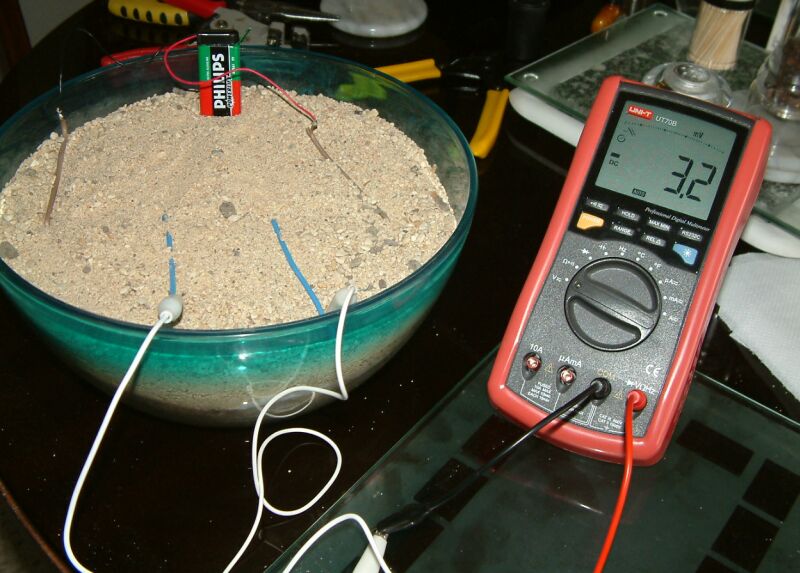
As the water disolves the salts and speads it allows the charges a more conductive path until eventually it joins the four points of interest on the surface.
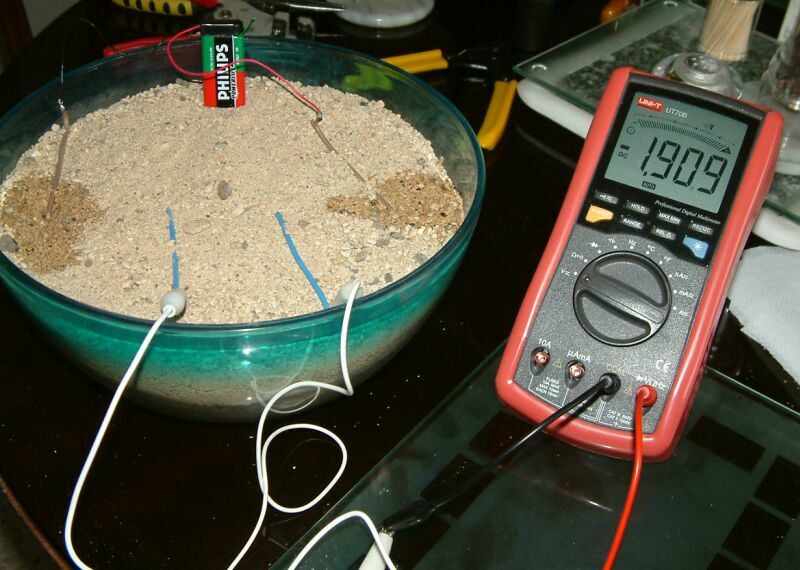
However, we are dealing with a three dimensional situation and the water is drawn down by gravitation.
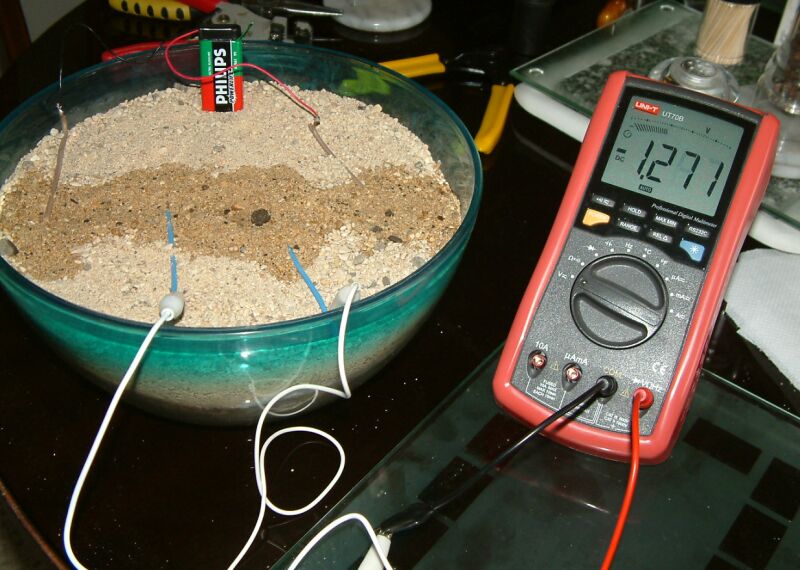
Each strata becomes saturated according to its permeability.
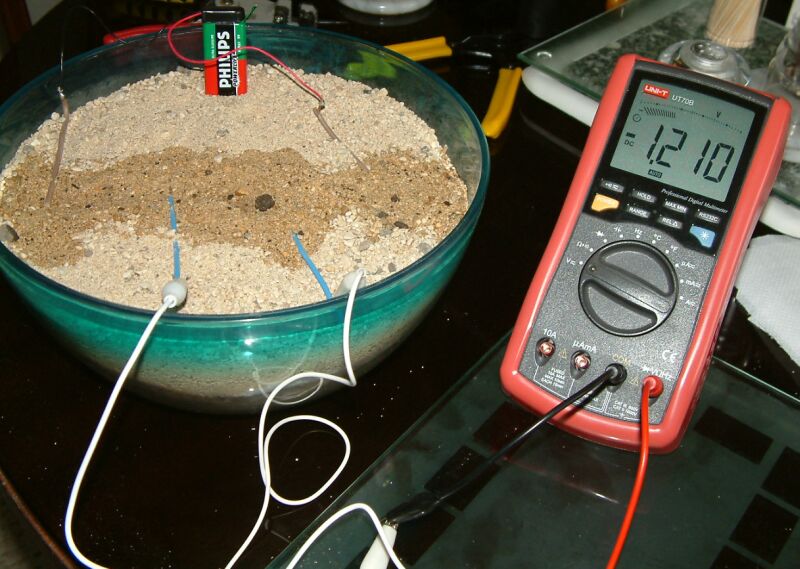
The conductive mass of the salty water varies layer by layer in these models as the strata in the ground vary in field circumstances.
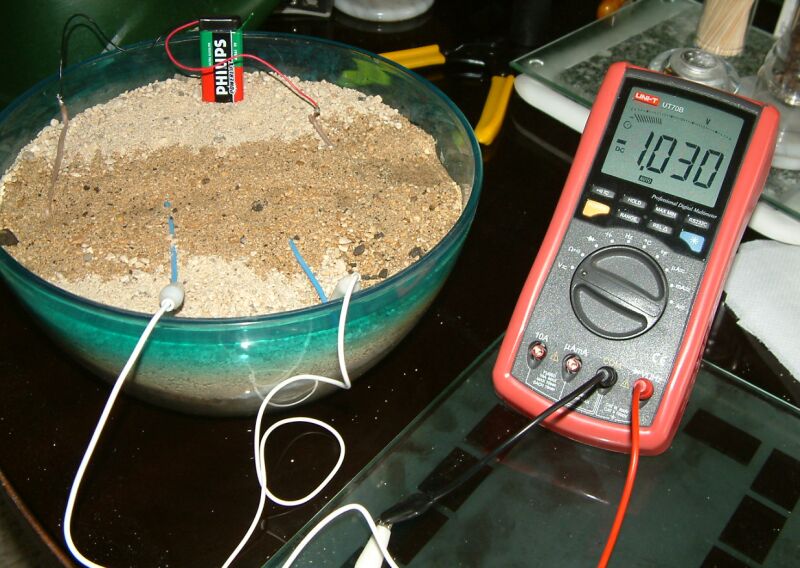
We can see that the total resistance can be calculated from the voltage as is done in the Wenner four pin method of ground resistance measuring.
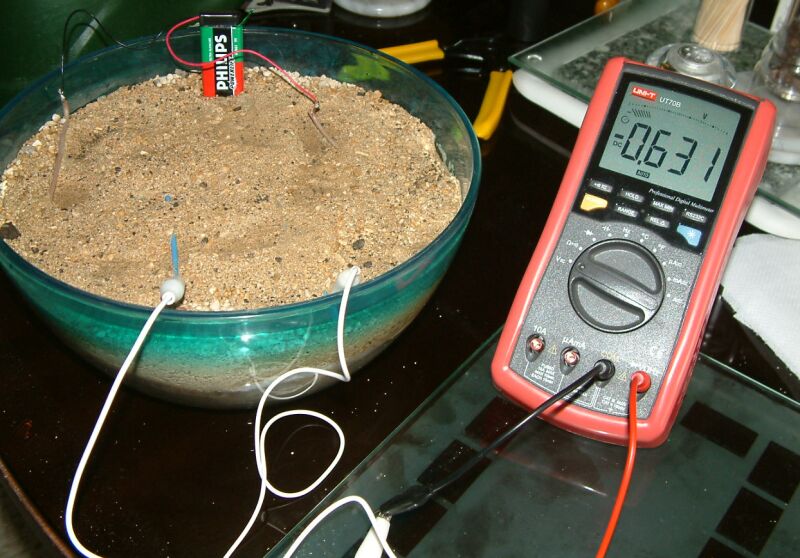
However, we are using an insulated space that does not replicated in true life except in the very rare occasions where a conducive area is completely surounded by a non-conductive 'mass earth'.
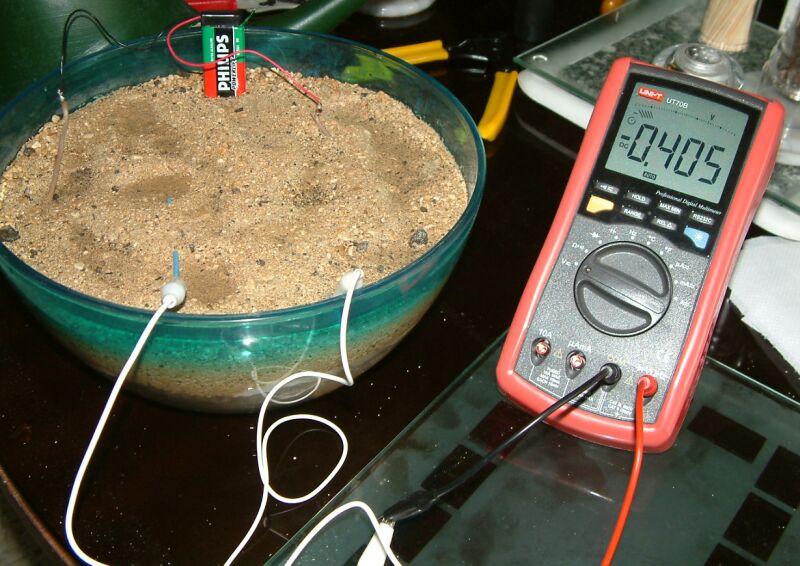
Such areas are sometimes found in rain forests based in silicon sand from which the salts have been washed away. Organic pockets in valeys and depressions are best addressed by sacrificial anode systems where the charges can be made available at locations where the electrolyte is most active and conductive.
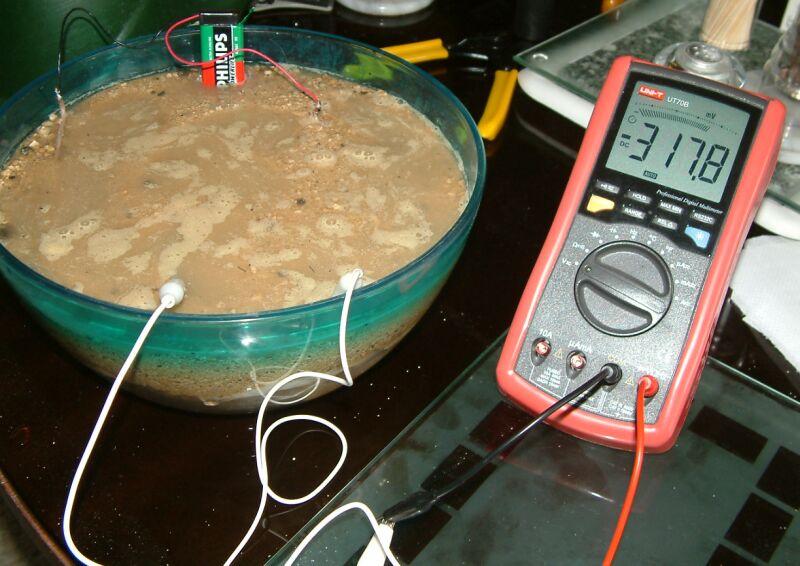
In order to model the normal affect of resistivity it is necessary to use a conductive container which can be used as 'remote earth'. That is why I use metal flight cases for many of my demonstration models.
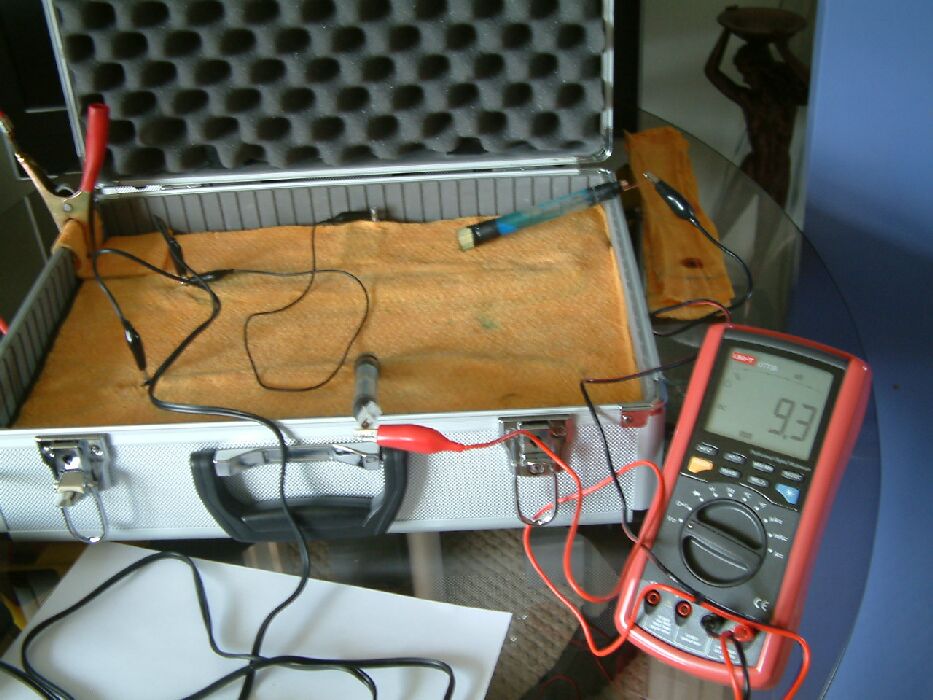
Back to Module08 index page